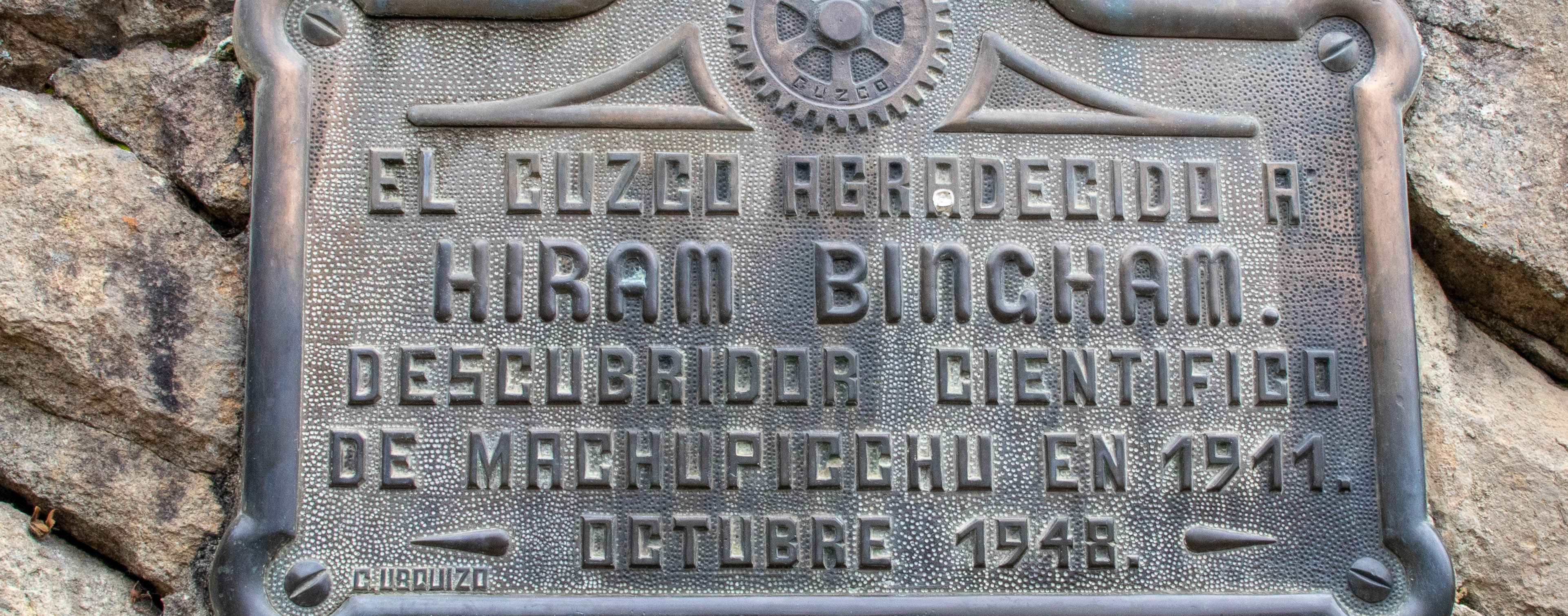Hiram Bingham III: An OG of the Die Living Lifestyle
Go get it. That’s kind of a theme here at Die Living HQ. Which is why we honor and admire the men and women who came before us, those who did exactly that. We honor those who see the peaks that everyone else views as unclimbable and find their way to the top. We honor those who need to push, to explore, and to discover both the world around them and the world inside themselves. We also honor those who recognize that any feat, large or small, requires support, that you are only as good as the team around you and that the men and women you rely on are just as important as you and your goal. We honor these people because we are these people.
Hiram Bingham III was one of those men.
Born in the Kingdom of Hawai’i in 1875, Bingham made his way to the United States by his early teens in search of an education. He attended a series of the most vaunted schools in America, beginning with high school at Phillips Academy, undergrad at Yale, post-graduate work U.C. Berkeley, and eventually earned a Ph. D from Harvard. During this time, Bingham became a preeminent scholar of South American history, which, at the time, was a virtually unexamined academic discipline.
Contrary to popular belief, Bingham was not an archaeologist. Rather, he was a scholar, an academic with an ear for a good story and a penchant for the thrill of discovery.
In the early-1900s, Bingham, turned on by an initial visit to the ancient Incan city of Choquequirao, began to search deeper into the Peruvian mountains. On expedition in 1911, Bingham uncovered and identified both Vitcos and Vilcabamba, believed to be two of the last Incan cities, while en route to his greatest and most time-enduring discovery.
Machu Picchu was, at the time, forgotten by all but the few people living in the valleys beneath the cloud-borne ancient city. Built in the fifteenth century as a home for Incan emperor Pachacuti, Machu Picchu was abandonded at the outset of the Spanish conquest after only a century of occupation. It was on the very expedition that Bingham discovered Vitcos and Vilcabamba that Bingham was led by Peruvian innkeeper and farmer Melchor Artega up the Huayna Picchu mountain, where atop sat the legendary citadel.
There, Bingham met a couple who had been living on and farming the garden terraces of the ancient city. It was their eleven-year-old son, Pablito, who led Bingham around the city on his first moments of discovery.

Upon returning to the United States, Bingham rose to the rank of captain in the Connecticut National Guard, eventually becoming an early aviator while founding and organizing ground school training for aviation cadets at universities around the nation. He would later serve in the Avation Section, U.S Signal Corps and the Air Service, rising to rank of Lieutenant Colonel.
After his military career had ended, Bingham, already having achieved fame from his adventures in Peru, served as Lieutenant Governor of and as a Senator from Connecticut.
After a truly extraordinary life, one which found him at the forefront of South American exploration, at the dawn of the history of aviation, and at the head of our great nation, Hiram Bingham III died peacefully at his home in Washington DC, having lived, searched and endeavored enough for ten men.





